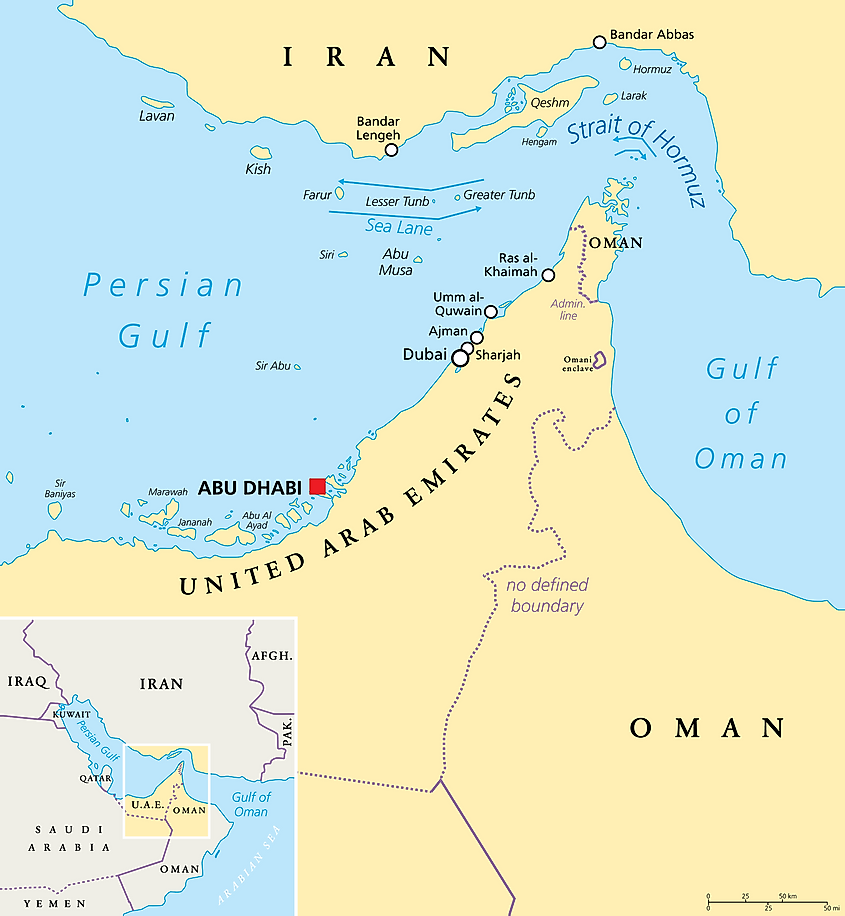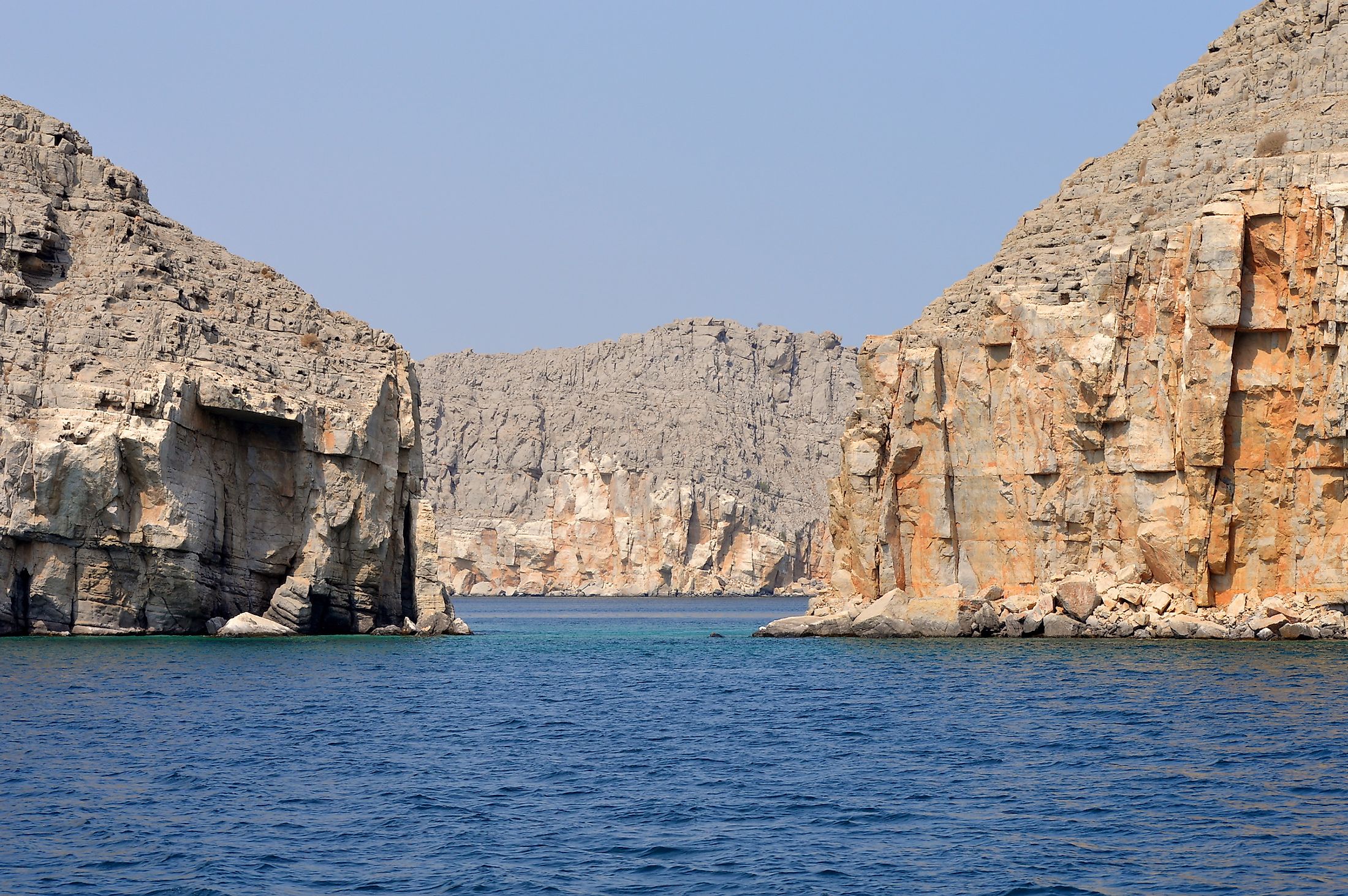
Strait Of Hormuz
The Persian Gulf separates Iran and the Arabian Peninsula. It drains into the Arabian Sea by the Gulf of Oman, also known as the Sea of Oman. However, the Gulf of Oman and the Persian Gulf are connected by the Strait of Hormuz. The strait is the only sea passage that allows the Persian Gulf waters to reach open waters (Indian Ocean). The Strait of Hormuz is a strategically important waterway that facilitates international trade.
Where Is The Strait Of Hormuz?
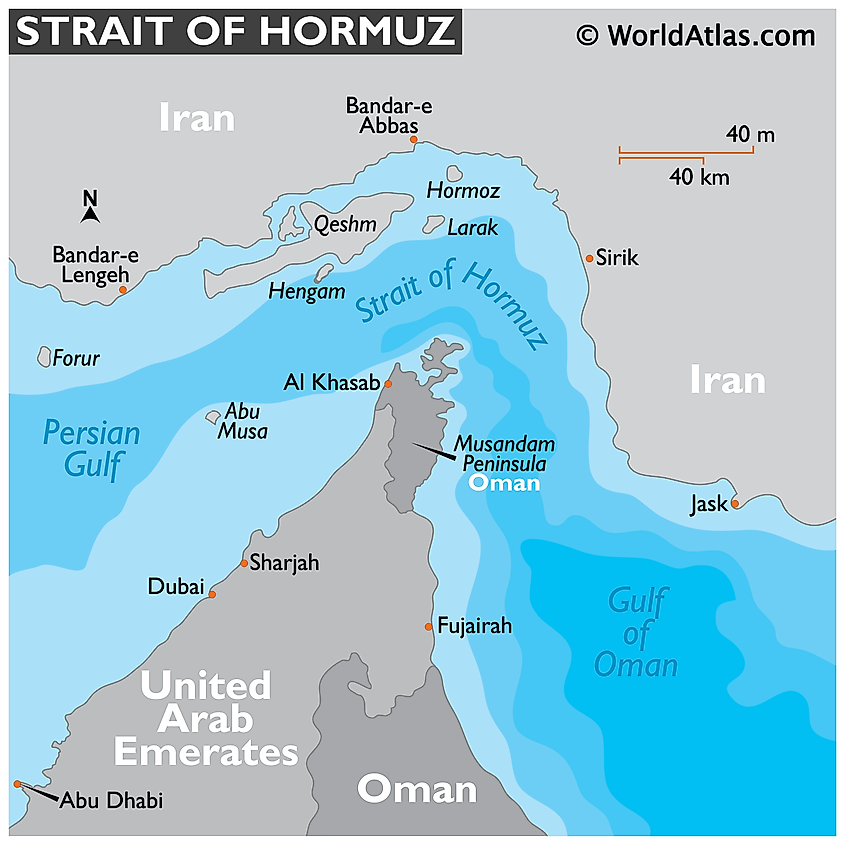
The Strait of Hormuz is a narrow waterway between Iran and Arabian Peninsula, specifically the United Arab Emirates, and Musandam (Oman). Iran is located on the north coast, while the UAE is on the south coast. The Gulf of Oman is on the Strait’s east, while the Persian Gulf is on the west. The strait is 167 kilometers long, with its width varying from 39 kilometers to 95 kilometers. Its width narrows towards the north but still allows for the passage of large vessels. Some of the islands located in the Strait of Hormuz are Hengam, Hormuz, and Qishm.
Origin Of The Name
The passage connecting to the Persian Gulf was described as early as the first century, in the Periplus of the Erythraean Sea. However, the description did not provide any name for the opening. From the 11th to 17th century AD, the Kingdom of Ormus was located on the Persian Gulf's eastern side. Scholars believe the strait may have derived its name from that of the kingdom. “Ormus” is derived from the Persian word “Hur-mogh,” translating to the "date palm." The Hurmoz and Minab tribes still refer to the strait as “Hurmogh.”
Strait’s Strategic Importance
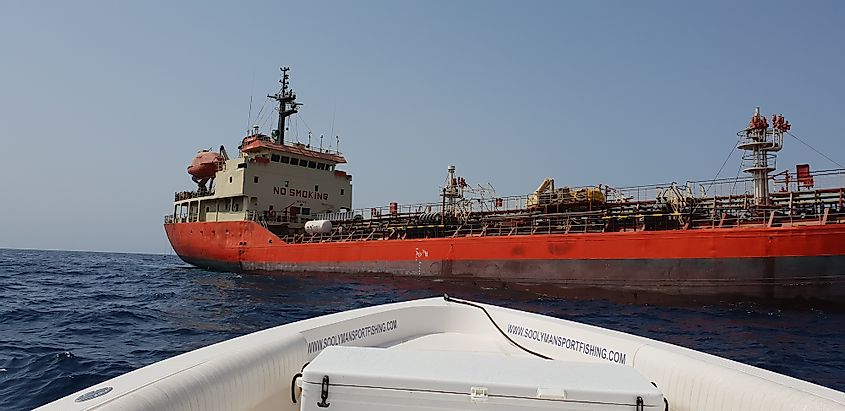
Oil Tanker in Straight of Hormuz off the coast of Fujairah Emirate, in Oman Sea, United Arab Emirates. Editorial credit: agilard / Shutterstock.com
Strait of Hormuz is considered one of the world’s most economically important choke points. The Arabian Peninsula has the world’s largest oil and gas reserve. Saudi Arabia is one of the largest oil producers, accounting for about 16% of oil reserves. About 30% of the world’s liquefied gas and 25% of oil pass through the Strait of Hormuz. In 2011, an average of 17 million barrels was shipped out of the Persian Gulf through the Strait, representing 20% of oil traded worldwide. In 2018, about $1.2 billion worth of oil passed through the Strait daily.
Brief History
The Strait of Hormuz has historically been an important strategic point for commerce, politics, and warfare. Until recently, Iran has threatened to take full control of the strait and close it permanently. The threats are fueled by the US provocation and sanctions on Iran. However, any attempted closure would impact the oil market greatly.
Several events have also taken place on the strait, of which some were pure accidents. In 1984, the Tanker War between Iran and Iraq took place on the strait. The war resulted from Iraq’s attack on the Iranian oil terminal and tankers. On April 18, 1988, the US and Iranian forces fought around the strait in a battle commonly known as Operation Praying Mantis. In the same year, the US shot down Iran Air Airbus A300 over the strait, killing 290 people, after wrongly identifying it as a fighter jet.
Strait Of Hormuz Navigation
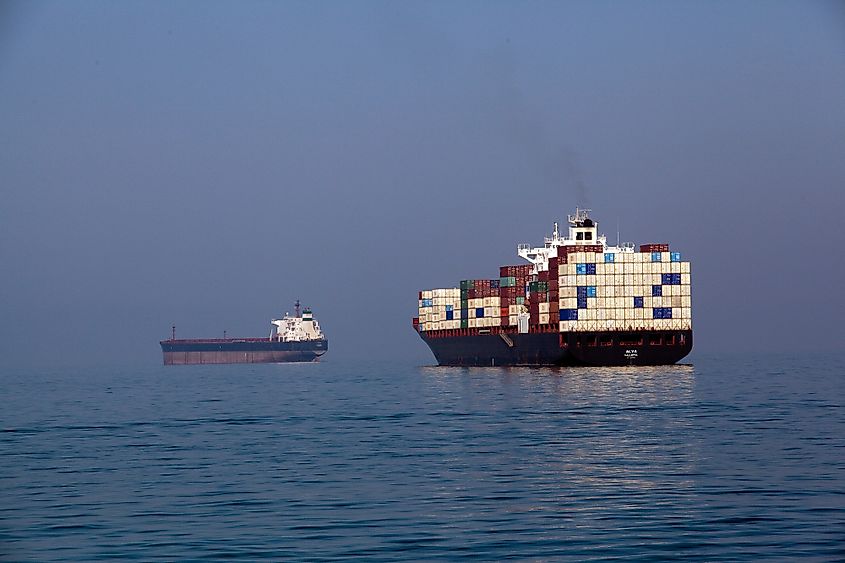
Ships using the Strait of Hormuz pass through Oman and Iran’s territorial waters under the UN Convention on the Law of the Sea. However, the Convention has not been ratified by all the countries. Because of its nature, vessels can collide in and around the strait. For instance, USS Hartford collided with USS New Orleans, injuring 15 sailors and spilling 25,000 gallons of diesel fuel. To reduce collision risks on the strait, vessels must follow the Traffic Separation Scheme. Inbound and outbound ships use different lanes. The lanes are two miles wide, with a two-mile-wide space between them.
